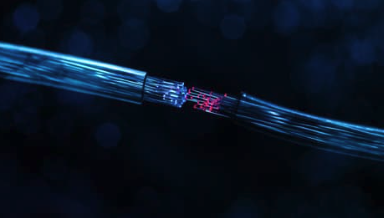What Is Optical Fiber and Why Is It So Promising?
Optical fiber cables use very thin strands of glass (less than 1/10th the thickness of a human hair) for communications, typically by connecting high-speed devices where bandwidth and distance are critical factors. Data travels through these cables in pulses of light – think of it like a high-end Morse code, in which light pulses transmit the 1s and 0s of encoded data. A special sheath keeps the light beam focused inside the cable, and the signal bounces along the walls of the cable until it reaches its endpoint, potentially tens of miles away.
There are many advantages of fiber over alternatives like copper cabling:
- More bandwidth and better performance – Fiber optic cables can use a broader range of frequencies than copper cables or WiFi for greater bandwidth and can carry much more data than copper of the same diameter. Fiber also offers lower latency and higher reliability for better performance – since it is capable of carrying much more data than copper can, fiber tends not to get overloaded as easily (which also means less need for throttling).
- Longer distance and faster speed – Fiber transmits data at close to the speed of light and only loses 3% of its signal strength over longer distances, compared to 94% loss for copper. Due to a more focused signal, single-mode fiber can support much greater distance and speed than multi-mode fiber. With either type, the transmission speed of fiber is 10-20 times that of copper and also compares favorably against wireless transmission.
- Less interference and better safety – Fiber optic cables are not susceptible to interference, and there’s no danger of corrosion, electrical shock, arcing, heat, or fire. Fiber can withstand temperature fluctuations, moisture, and lightning strikes. Fiber is also sturdier than copper cable, as fiber is able to withstand 4-8 times greater pressure before damage occurs.
- Improved security – Fiber doesn’t conduct electrical signals, so data cannot as easily be intercepted during transmission, and it’s difficult to tap into without detection – compromised cables are easily detectable due to light leakage.
- Greater sustainability – Fiber uses more sustainable materials than copper and has a smaller carbon footprint. The silica used to make the glass for fiber optic cables is highly abundant and is easier to extract than copper. Fiber is far more energy efficient than copper or wireless, with bigger carbon savings at faster speeds due to reduced electrical use in transmission. Fiber also lasts longer than copper and, since it can transmit more data with less cabling, potentially requires much less plastic for cladding. And fiber uses fewer resources overall – since fiber, unlike copper, doesn’t require bigger cables to transmit more data, it requires less space and fewer materials.
While fiber does have some disadvantages – for example, it tends to be more expensive at the outset and somewhat trickier to install than copper or wireless – the benefits generally outweigh the drawbacks, and the improved performance and lower maintenance costs of fiber will pay for itself, particularly over the life of the cabling.
Because of these benefits and the versatility of optical fiber, the fiber optic market is estimated to reach over $7B by 2025 and nearly $10B by 2028.
How is Optical Fiber Being Used Today?
Connectivity is crucial in almost everything we do, and with such high reliability and performance, fiber offers even greater possibilities for taking advantage of that connectivity. Optical fiber is already being implemented in many different verticals, with a wide variety of applications including the following:
- Residential and hospitality – Connectivity is essential both for operations and for the guest/resident experience. Fast, reliable, high-capacity Internet and the amenities that come with it have become a major factor in choosing a hotel or a place to live, impacting people’s choices of where to stay or live as well as how much they’re willing to pay. Having a fast, reliable, higher-bandwidth connection not only improves performance for communications and in-room entertainment, but also enables hospitality and residential properties to implement offerings such as casting and streaming, contactless check-in, smart environmental controls, AI-assisted planning for staff and equipment, and more. Bringing fiber to the room/unit also simplifies the implementation of triple-play services because only a single cable is required, and having fewer cable runs overall means less space is needed for equipment rooms.
- Healthcare – Fiber optic cabling is especially suitable for the healthcare industry, in part due to its improved security, its lack of interference with nearby equipment, and its robustness under a variety of environmental conditions. The high capacity of fiber yields many possibilities for its use in medical environments, where the amount of data being transmitted continues to grow. Current applications include medical imaging, operating room integration with live video and centralized control of robotic equipment, the transmission of medical records and real-time diagnostic data, and AI-assisted diagnostics. Fiber is also increasingly being used for telemedicine, which has grown substantially in recent years and is now being used 38 times more often than before the COVID-19 pandemic, generating a real need for infrastructure that can handle the associated traffic. As fiber becomes more available in remote areas, this is expected to enable better access to healthcare for currently underserved populations.
- Education – Another area in which fiber helps provide greater access for underserved populations is education. During the pandemic, the benefits of distance learning and virtual classrooms became clear, but even after the pandemic, there is a need for remote education opportunities for those who don’t have ready access. Not only can optical fiber support the delivery of education to remote locations, but it can also support new ways of teaching and learning, including VR- and AR-based options that bring learning to life.
- Office environments – Fiber optic cabling offers a stable, high-speed connection with enough capacity to support essentially any office environment. Not only does this enable the fast transfer of files and other data, but it also enables teleconferencing and phone networks that enable the always-on business. Fiber simplifies the installation and management of cabling with just one wire, and its long-distance capacity makes it easily able to handle entire business campuses.
- Energy and mining – The security, reliability, and resistance to interference that are inherent in fiber make it a good choice for the energy sector. Because fiber can carry large amounts of data quickly, it can support real-time sharing of data between power plants, substations, and offices to enable better insights for efficiency. Some utilities are also partnering with local communities and ISPs to provide infrastructure for bringing fiber to homes, for example, by leasing excess capacity on the utilities’ fiber networks. The increased efficiency and improved sustainability of fiber also make it a good choice for green energy compared to alternatives such as copper cabling. In the mining sector with its difficult and risky conditions, specially fortified fiber optic cables are used to support the need for real-time communication and automation to improve both safety and operational efficiency. With the vast amount of data that be transmitted quickly and reliably by fiber, mining companies can understand their sites in greater detail, enabling more careful mining with less waste and better returns.
- Manufacturing – As big data and real-time measurement and communication become increasingly important in manufacturing, fiber has become an important component of facilities. Fiber can handle harsh factory conditions such as heat, humidity, and vibration and is resistant to hazards such as sparking, and thus has been a solid choice to support the Industrial Internet of Things (IIoT), particularly with regard to predictive maintenance and automation.
- Transportation and logistics – Fiber is increasingly being used to support Intelligent Transportation Systems (ITS). ITS collects information such as traffic, toll booth info, weather, accidents, speed limits, alerts, traffic camera feeds, and more, and can control traffic flow and manage parking through means such as routing and configurable signage and signals. As in so many other sectors, intelligent and AI-driven solutions in transportation and logistics (not to mention the coming proliferation of automated vehicles) rely on large amounts of data being collected and transmitted in real time for useful analysis, and fiber provides the best available method to transport this data quickly, reliably, and securely. Fiber also provides a reliable infrastructure to support both public and private WiFi networks in transport hubs such as train stations, airports, and bus terminals and can support the real-time communication needs of public transport and private logistics companies.
- Retail – Retail is another sector in which fiber provides support for IoT solutions. Whether for inventory management, environmental controls, loss prevention, or customer data collection and response, the retail sector relies on up-to-the-minute data to make decisions that can make or break a business. Fiber provides a solid backbone for transmitting all of that data quickly and reliably. Fiber also has the capacity to support everything from supply chain management to an improved customer experience using data-heavy features such as e-commerce, contactless and self-service options, video, and virtual and augmented reality experiences, with no degradation of signal even during the busiest times of the day.
Developments in Optical Fiber Technology
There are a number of new developments in optical fiber that should continue to improve performance and usability while decreasing costs. For example, integrated graphene-silicon photonics has the potential to increase the density of fiber optic circuits and reduce manufacturing costs by incorporating graphene’s unique ability to detect and modulate light signals.
Companies have also been testing new types of cable such as hollow core fiber, which potentially allows data to travel 50% faster than over standard optical fiber, with latency reduced by a third. Hollow core fiber, as implied by its name, uses a ring of glass to encapsulate a hollow core along the length of the cable, enabling data to travel more quickly and with less latency than through a glass-only cable, bringing speeds much closer to actual light speed.
New standards are also being developed by groups such as the Institute of Electrical and Electronics Engineers (IEEE), an international engineering standards body. Standards are being released for both single-mode and multi-mode fiber, with versions to support a variety of configurations, speeds, and applications.
Several vendors and data center operators are also collaborating to develop specifications for transceivers, optic cabling, and encoding methods that will cost less, require less power, and achieve lower latency while enabling signals to travel across greater distances.
With all of these developments to improve the technology, along with an increasing number of applications requiring high speed and low latency for more and more data, the future of optical fiber is promising indeed. As costs decrease and fiber use becomes more widespread, making the case for alternatives such as copper cable will likely become ever more difficult in light of fiber’s benefits.
Here are some helpful links to learn more:
- Top 10 Advantages of Fiber Optic Internet Connections
- Four Key Benefits of Fiber Optic Transmission
- 8 Advantages of Fiber-Optic Internet vs. Copper Cable
- 5 Unique Benefits of Fiber Optic Cable
- How Does Choosing Fiber Internet Benefit the Environment?
- Photonic applications of graphene
- This fiber optic cable full of air could be the key to better 5G networks
- The Future of Fiber Optics Is Certainly Bright

